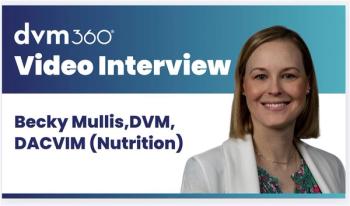
Handling foreign bodies at the duodenojejunal flexure during GI surgery
Galina Hayes, BVSc, DVSc, PhD, DACVECC, DACVS, discusses how to adapt the surgical technique when challenges arise.
Galina Hayes, BVSc, DVSc, PhD, DACVECC, DACVS, an associate professor at Cornell University in Ithaca, New York, discusses how to approach anatomic surprises encountered during surgery. Drawing from a session she presented at the 2025 New York Vet Show, Hayes highlights strategies for adapting technique when foreign bodies lodge at the duodenojejunal flexure.
The following is a transcript of the video, which has been lightly edited for clarity and cohesion.
Hayes: Hi, my name is Galina Hayes. I'm a specialty soft tissue surgeon here at Cornell University in Ithaca...New York. I've been teaching veterinary surgery for the [past] 12 to 13 years. I'm also boarded in emergency and critical care, which I find really helpful for preoperative and postoperative management of our trickier patients. Before I became a specialist, I worked in [emergency department] practice, and before that, in small animal and mixed practice....
When facing anatomic variations or unexpected findings during surgery, what are the best ways to adapt the technique?
I think the big ones are, a lot of times, foreign bodies like to lodge at the first U bend that they meet, right where the duodenum curves around and into the jejunum, and there's a nice ligament right there, the duodenac colic ligament. It's really important if you're dealing with a foreign body that's lodged at that location to remember to release that ligament fully. That's what then allows you to exteriorize that segment of intestine and work on it with good visualization. So, that's probably a key point. If you have a foreign body in that area—if you're dealing with a foreign body—or, heaven forbid, a perforation in the proximal duodenum and it's close to the common bile duct, then there are some modifications that we can think about at that level too.
Newsletter
From exam room tips to practice management insights, get trusted veterinary news delivered straight to your inbox—subscribe to dvm360.






